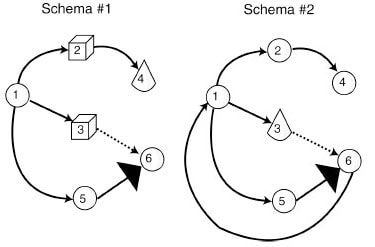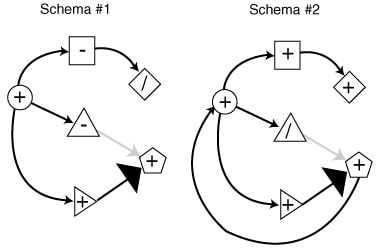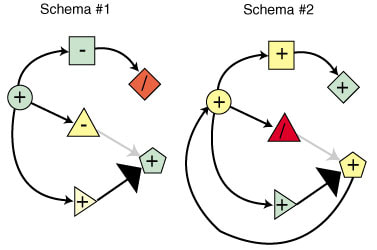SCHEMAS
The interaction between entities is illustrated within an arbitrary timeframe that best explains the significant events and/or interactions which occur. 2-Dimensional representations of a timeframe are called Schemas. Thus, Schemas can be thought of as the frames of a comic strip, where each frame tells a part of the story. In this example numbers (1-6) are used to label the identity of an entity and, according to LMSL rules, shapes are used to denote the entity mode (positive, negative, neutral, or terminated. A variation could be to color the numbered labels (or the shapes) to show the condition of entities ("green" - fully functional, "yellow" - partially functional, or "red" - terminal).
Labeled Entities with Mode Shapes and No Conditions
In this Schema example shapes are used to denote the identity of an entity and symbols are used to denote the entity mode (positive, negative, neutral, or terminated). LMSL rules allow colors to be used to denote the condition of an entity. Note that this example also used grey lines (instead of "dashed" lines) to denote the "information" interaction between entities. Also note that each version of the Schemas show exactly the same information. The ability to mix symbology is one of the keys to the power and flexibility of the language.
|
Shaped Entities with Mode Symbols and No Conditions
|
Shaped Entities with Mode Symbols with Conditions
|



